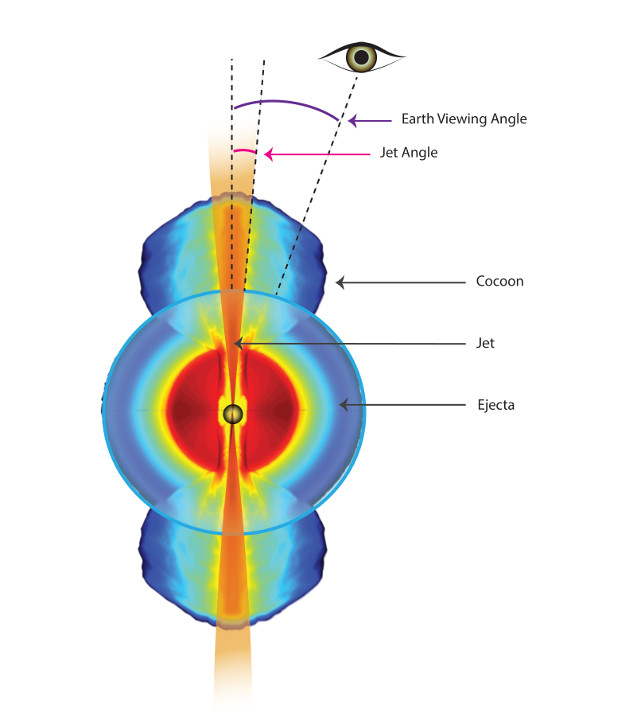 An article published in the journal “Nature” describes the observations of a relativistic jet that followed the merger between two neutron stars discovered in August 2017, the first case of an event detected and studied in both electromagnetic and gravitational waves. A team of researchers used the precise measurements made with some radio telescopes to establish that a narrow jet of particles was emitted at a speed close to that of light after the event.
An article published in the journal “Nature” describes the observations of a relativistic jet that followed the merger between two neutron stars discovered in August 2017, the first case of an event detected and studied in both electromagnetic and gravitational waves. A team of researchers used the precise measurements made with some radio telescopes to establish that a narrow jet of particles was emitted at a speed close to that of light after the event.
The confirmation of the theoretical concept of the type of explosion called kilonova was accompanied by the theory that predicts the cocoon model after the kilonova, which found subsequent confirmations. The consequences of the GW170817 event were studied in the course of the following months, but after several months it was still unclear if two narrow jets of particles going in opposite directions at extremely high speeds were produced. Among other things, they’re important in the study of short-duration gamma-ray bursts because they’re considered their cause.
Combining observations of the Very Long Baseline Array (VLBA), the Very Large Array (VLA) and the Green Bank Telescope (GBT) it was possible to discover a considerable displacement of a region of radio emissions at a speed that can be explained only by a jet of the expected type. The top image (D. Berry, O. Gottlieb, K. Mooley, G. Hallinan, NRAO/AUI/NSF) shows – not in scale – the cocoon and the position of the jet in October 2017 and in April 2018. Over the 155 days between the two observations, there was an apparent displacement of the jet of two light years, which means at a speed four times higher than that of light.
The apparent velocity of the jet is caused by an illusion due to the fact that the jet isn’t directed exactly towards the Earth. The bottom image (Sophia Dagnello, NRAO/AUI/NSF) shows that situation with the narrow angle of the jet and the wider angle between the jet and the point of view of the Earth’s astronomers. The jet approaches the Earth but at the same time is moving towards another direction and its particles actually travel slower than light. The consequence is that the light from the back of the jet reaches the Earth a little before the light from the front of the jet giving a wrong impression of its speed.
According to data analysis, the jet is no more than 5 degrees wide and was pointed 20 degrees away from the Earth’s direction. Taking all of that into account, the result is that the jet travels at a speed that is about 97% of that of light, which is very fast for a jet of particles but not as impossible as the apparent one.
The jet was detected thanks to electromagnetic emissions that include gamma rays. These are new clues that confirm the link between neutron star mergers and short-duration gamma-ray bursts. To detect them, however, they need to be pointed towards a direction quite close to the Earth. The one associated with the event GW170817 was the weakest observed so far because its direction was not very close to the Earth.
A little more than a year after its detection, the GW170817 event keeps on offering new insights for research confirming the potential advances possible with multimessenger astronomy, in this case with the combination of gravitational and electromagnetic waves. This new era of astronomy could really enable us to take a leap forward in our knowledge of the cosmos.



Permalink